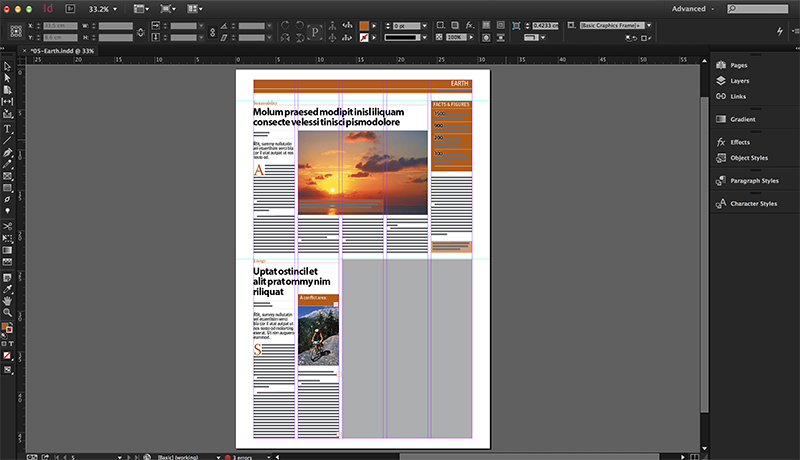
If you’re going to be doing serious design work in InDesign, it’s probably better just to accept your fate and get comfortable with this second system, as it will provide you with much greater flexibility in your layout design. A new measurement system can be hard to adapt to, but you can even customize this aspect of the interface if you’d like. Perhaps the most confusing aspect for new users might not actually have anything to do with InDesign, but rather with the measurement units used by the publishing industry: points and picas instead of inches or centimeters. There are a couple of strange issues that tend to occur when resizing images – sometimes you’ll find yourself resizing the container of the image rather than the image itself, and getting InDesign to recognize the switch between the two isn’t always as easy as it should be. I find that working with InDesign is as intuitive as working with any vector-based application such as Illustrator, CorelDRAW or Affinity Designer. Fortunately, there are plenty of other training materials available through the InDesign online help or through the tutorial links we listed earlier. Adobe has updated InDesign to match their other Creative Cloud apps to offer built-in learning options on the startup screen, although the available videos are fairly limited at the moment. Working with InDesign will be familiar to anyone who has worked with an Adobe program in the past, although it’s also fairly easy to learn the basics no matter what your current skill level is. The ‘Digital Publishing’ workspace, complete with interactivity options on the right It also follows the standard Adobe program layout of a main workspace surrounded by a toolbox on the left, tool options across the top, and more specific customization and navigation options along the left. It follows the recent Adobe trend of using a dark gray background that helps your work to stand out from the interface, although you can customize this too if you’d like. User InterfaceĪs with all of Adobe’s Creative Cloud applications, InDesign has a well-designed interface that is almost entirely customizable. For a more in-depth explanation of specific features, check out Adobe’s InDesign Help section. Instead, we’ll look at how it’s designed, how well it works as a page layout editor for print and digital projects, and what you can do with your projects once they’re finished. Note: Adobe InDesign is a large program, and we don’t have the time or the space to go over every single feature it offers.
Adobe indesign adobe trial#
After this trial period is over, InDesign can only be purchased as part of a Creative Cloud subscription starting from $20.99 USD per month.
Adobe indesign adobe software#
No, InDesign is not free software but there is a free, unlimited 7-day trial version available.
Adobe indesign adobe professional#
As of now, the vast majority of professional desktop publishing is handled using InDesign.

It wasn’t an immediate success thanks to the dominance of the much older QuarkXpress, which was the industry-leading software package at the time.Īdobe kept working on InDesign, and Quark eventually lost a huge amount of market share during the early 2000’s as InDesign kept improving and Quark kept making blunders. InDesign is a page design and layout program first launched by Adobe in 2000. They have had no editorial control or review of the content. My training as a graphic designer also included explorations of user interface design, which helps me sort the best graphic design programs from the overwhelming number of competing options out there in the world today.ĭisclaimer: I am a Creative Cloud subscriber, but Adobe has provided me with no compensation or consideration for the writing of this review. I’m trained as a graphic designer, and I’ve been working with InDesign for over a decade on a range of products from product catalogs to brochures to photo books. Hi, my name is Thomas Boldt, and I’ve been working in the graphic arts for well over a decade.


 0 kommentar(er)
0 kommentar(er)
